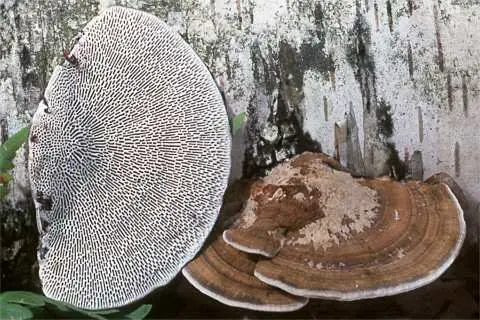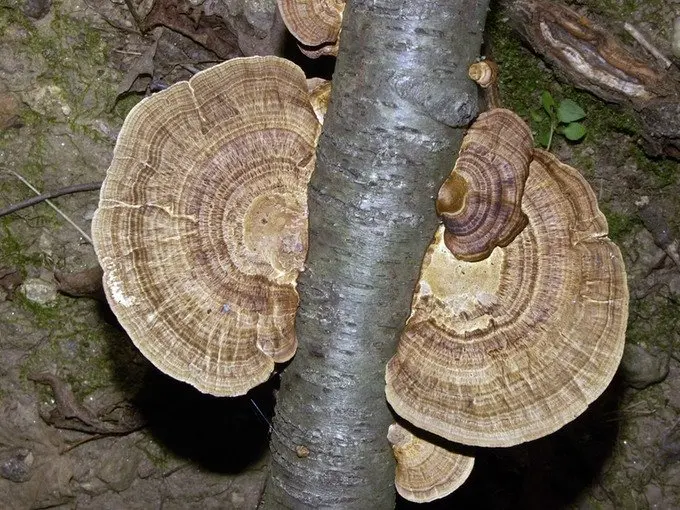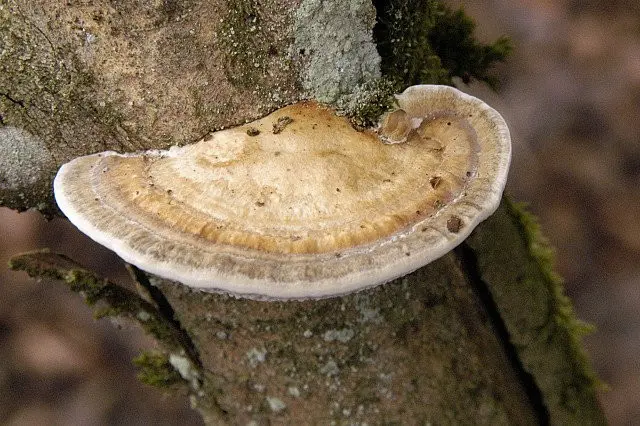Tuberous polypore (Daedaleopsis confragosa)
- Division: Basidiomycota (Basidiomycetes)
- Subdivision: Agaricomycotina (Agaricomycetes)
- Class: Agaricomycetes (Agaricomycetes)
- Subclass: Incertae sedis (of uncertain position)
- Order: Polyporales (Polypore)
- Family: Polyporaceae (Polyporaceae)
- Genus: Daedaleopsis (Daedaleopsis)
- Type: Daedaleopsis confragosa (Tinder fungus)
- Daedaleopsis rough;
- Dedalea tuberous;
- Daedaleopsis tuberous in a blushing form;
- Bolton’s crushing mushroom;
- Daedaleopsis rubescens;
- Daedalus shattering;
 The tuberous tinder fungus (Daedaleopsis confragosa) is a fungus from the Trutov family.
The tuberous tinder fungus (Daedaleopsis confragosa) is a fungus from the Trutov family.
The fruiting body of the tuberous tinder fungus has a length in the range of 3-18 cm, a width of 4 to 10 cm and a thickness of 0.5 to 5 cm. Often the fruiting bodies of this type of fungus are fan-shaped, sessile, have thin edges, with a cork tissue structure. Tuberous polypores are located, most often, in groups, sometimes they are found singly.
The hymenophore of this fungus is tubular, the pores of young fruiting bodies are slightly elongated, gradually becoming labyrinthine. In immature mushrooms, the color of the pores is somewhat lighter than that of the cap. A whitish coating is visible on top of the pores. When pressed, they change color to brown or pinkish. As the fruiting bodies of the tuberous tinder fungus mature, its hymenophore becomes darker, gray or dark brown.
The spore powder of this fungus has a whitish color and contains the smallest particles 8-11 * 2-3 microns in size. The tissues of the tinder fungus are characterized by a woody color, the smell of the pulp is inexpressive, and the taste is slightly bitter.

The tuberous tinder fungus (Daedaleopsis confragosa) bears fruit throughout the year, preferring to grow on dead trunks of deciduous trees, old stumps. Most often, this type of fungus is seen on the trunks and stumps of willows.
Inedible.

The main similar species with tuberous tinder fungus is tricolor daedaleopsis, a feature of these two types of fungi is that they provoke the development of white rot on the trunks of deciduous trees. According to the mycologist Yu. Semyonov, the described species has several common features with a single-color grayish-beige tinder fungus. It also looks a bit like a fleecy gray-brown zonal Lenzites birch.
Pseudotrametes gibbosa also bears some resemblance to the tinder fungus (Daedaleopsis confragosa). It has the same elongated pores, but the upper side has bumps and a lighter color. In addition, when the pulp is damaged or pressed, the color remains the same, without a reddish tint.









